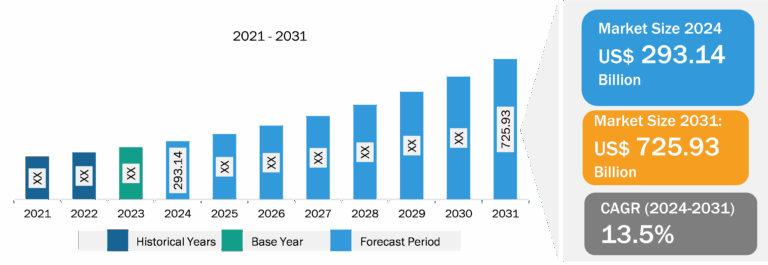
Unified Threat Management Market
Small and medium-sized enterprises (SMEs) are significant contributors to economic growth as they account for the majority of businesses (~90%) worldwide. However, due to financial constraints, the growth of SMEs is gradually decreasing. According to International Finance Corporation (IFC) estimations, nearly 40% of formal micro, small, and medium enterprises (MSMEs) in developing countries have ~US$ 5.2 trillion in unmet financing that limits their business growth. Thus, the government sector and organizations are constantly supporting SMEs to expand their business, which further contributes to the economic growth of any country.
For instance,
• World Bank Group is focused on improving SMEs’ access to finances and obtaining innovative solutions to unlock various sources of capital. It also provides Advisory and Policy Support for SME finance that helps them adopt innovative solutions.
• The US Small Business Administration launched the Small Business Digital Alliance to help small businesses strengthen their online footprint via access to free digital tools.
• In Europe, a network of European Digital Innovation Hubs or the Enterprise Europe Network offers help for SMEs to adopt digital tools securely. They provide solutions such as raising awareness, assessing digital maturity, access to finance, offering mentoring, and facilitating experimentation with digital tools.
Thus, such instance by the government gives rise to SMEs’ capability to adopt advanced solutions in order to expand and protect their business digitally. Unified threat management solutions and services offer security to the SMEs’ network infrastructure. This solution acts as a layer of protection to the network, based on the connections between each distribution switch layer, and offers a zone-based monitoring and controlling system to protect the network from any possible threats. As SMEs have limited budgets, the support helps them adopt cost-effective unified threat management as an affordable security solution. Thus, all the factors mentioned above drive the unified threat management market growth.

US Dominates Unified Threat Management Market in North America
In the US, federal government agencies encounter malicious cyber activities that could impact essential services or unauthorized access to sensitive data in the government database. Various unified threat management software providers are launching unified threat management (UTM) software services to protect sensitive databases. For instance, in May 2023, Palo Alto Networks announced the launch of its ML-powered Next-Generation Firewall (NGFW) to Microsoft Azure as a managed Azure-native ISV service. Cloud NGFW for Azure offers a widespread security solution with industry-leading capabilities such as advanced URL filtering, advanced threat prevention, WildFire, and DNS security. Powered by ML and AI, it can stop unknown, known, and zero-day threats, enabling customers to safely and more quickly migrate their applications to Azure. Also, in March 2022, Palo Alto Networks announced that it partnered with Amazon Web Services (AWS) to reveal the Palo Alto Networks Cloud NGFW for AWS—a managed Next-Generation Firewall (NGFW) service designed to simplify securing AWS deployments—enabling organizations to speed their pace of innovation while remaining highly secure. Hence, the increasing demand for UTM software is propelling the unified threat management market growth in the US.
Segmental Overview
Based on component, the unified threat management market is divided into solutions and services. The solution segment recorded a larger unified threat management market share in 2022 and is anticipated to register a higher CAGR during the forecast period. Based on deployment, the unified threat management market is bifurcated into cloud and on-premises. The cloud segment recorded a larger unified threat management market share in 2022 and is anticipated to register a higher CAGR during the forecast period. Based on enterprise size, the unified threat management market is bifurcated into large enterprises and SMEs. The large enterprises segment recorded a larger share in the market in 2022, whereas SMEs are anticipated to register a higher CAGR during the forecast period. Based on end users, the unified threat management market is segmented into BFSI, manufacturing, healthcare, retail, government, IT & telecom, and others. The IT & telecom segment registered the largest share of the unified threat management market in 2022, whereas the healthcare segment is anticipated to record the highest CAGR during the forecast period.
Market Analysis: Competitive Landscape and Key Developments
Fortinet Inc, Check Point Software Technologies Ltd, SonicWall Inc, Sophos Ltd, Cisco Systems Inc, Juniper Networks Inc, Barracuda Networks Inc, Stormshield SAS, Huawei Technologies Co Ltd, and WatchGuard Technologies Inc are among the key unified threat management market players that are profiled in the report. Several other essential unified threat management market players were also analyzed for a holistic view of the market and its ecosystem. The market report provides detailed market insights to help major players strategize their growth.
- In February 2023, WatchGuard Technologies Inc., a global leader in unified cybersecurity, announced the release of its new Firebox T25/T25-W, T45/T45-POE/T45-W-POE, and T85-POE tabletop firewall appliances. These appliances are powered by WatchGuard’s Unified Security Platform® architecture to deliver comprehensive safety and simplified management via WatchGuard Cloud. These new firewalls are planned to provide the performance that remote and distributed business environments need for better protection against the latest network security threats.
- In April 2023, Securonix announced the new standard for the SIEM market with the unveiling of the industry’s first Unified Defense SIEM. The platform offers 365 days of “Hot” data to the organizations, powered by Snowflake, for fast search and investigation, best-in-class threat content-as-a-service, proactive defense with continuous peer and partner collaboration, and unified Threat Detection, Investigation and Response (TDIR) experience, all in a single platform.





